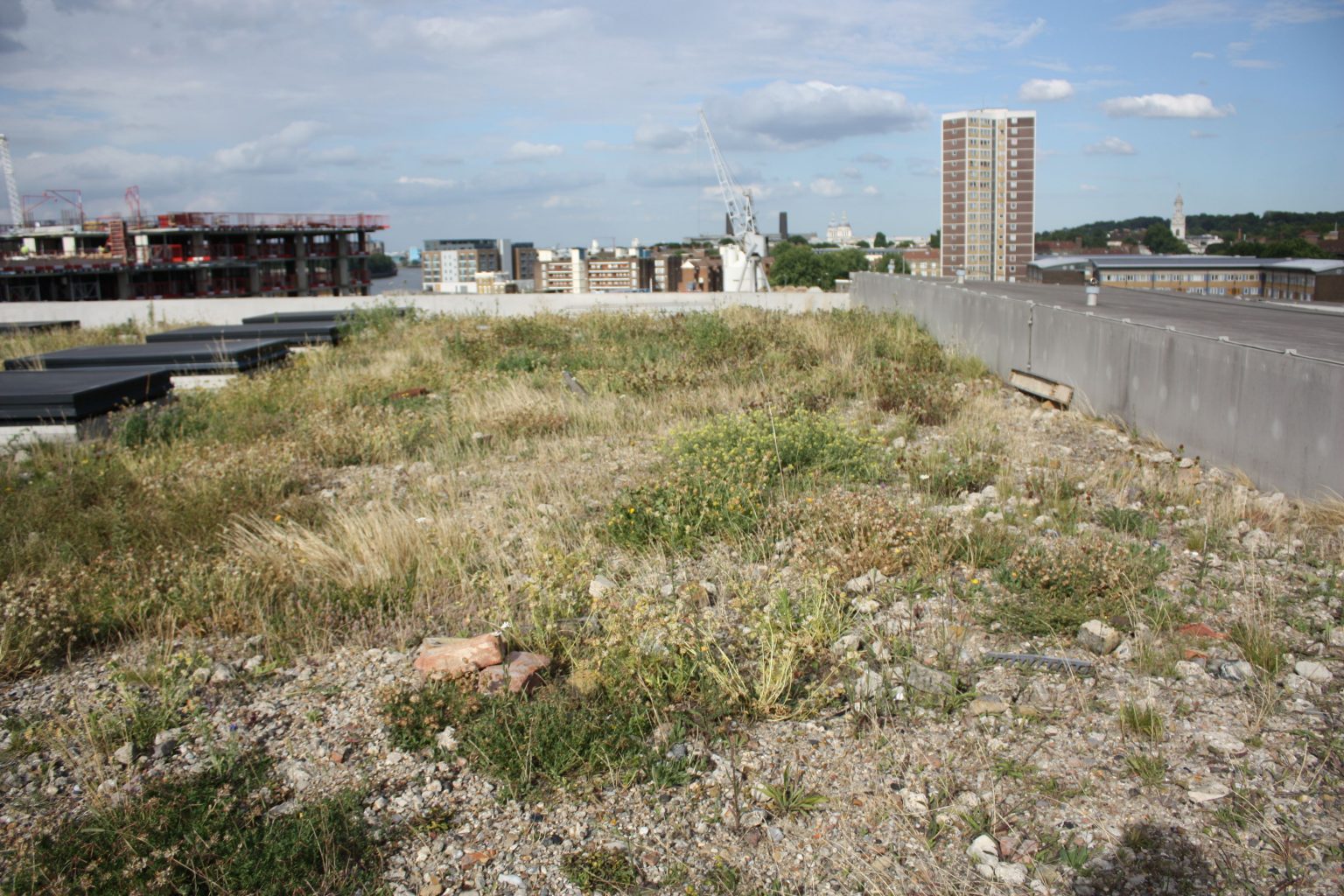Interest in bees is increasing on green roofs. Not the yesterday’s BBC news piece. Funny we have been researching bees for since 2004 on green roofs, brown roofs and living roofs. Yesterday I visited the Laban with Emily who is doing a specific project on bees and roofs. This hopes to mirror the study undertaken in Switzerland back in 2006 the paper of which is now available on livingroofs. This study shows that wild bees and honey bees benefit form a wide range of wildflowers and not just sedums, that tend to flower only in June and July.
The Laban roof is slowly turning so there are not as much flower heads. The may, June and July flowers are turning to seed but in a couple of weeks the Yarrow and Mullein should soon be in full flower maintaining the resource for bees through to September. Obviously there can’t bee a be hive too near the Laban as I haven’t noticed any Honey Bees on the Laban, though they are quite widespread on other roofs, such as Wearside and Justin Bere’s.
Although it was late afternoon there were at least four White-tailed Bumble Bees and at least 7 brown carder bees frequenting the roof. A steady breeze was blowing but not the gale that coursed across the roof last week.
I took to tracking a couple of carder bees to see what plants there were tending to visit. Vipers bugloss, Ribbed melliot, Red Clover, Kidney Vetch and Birds Foot trefoil were the plants most visited. Then Lucerne and Sand lucerne. It was quite interesting that both marjoram and St.John’s Wort are now in peak flower but the carder bees seemed to avoid this plants.
It’s got me thinking on how best to monitor/study bees on green roofs – whether Honey bees or wild bees. We have a number of students who want to look at this. My thoughts will follow another day.
